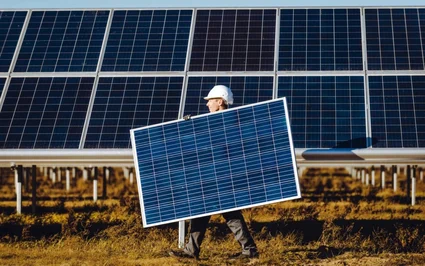For Independent Power Producers (IPPs) who purchase solar assets after they've been fully developed and designed, there are fewer chances to address design flaws or optimize costs through value engineering. However, engaging an Owner’s Engineer (OE) or Independent Engineer (IE) early in the process remains crucial to ensuring safety, quality, and long-term operational performance.
In the first part of this two-part series, I provided insights into how IPPs can maximize the value of third-party engineering services during the initial phases of project development. Now, let’s shift our focus to the additional value Pure Power brings to IPPs during and following the construction phase.

### IE or OE Engaged During Construction
The transition from pre-construction to active construction happens when the Engineer of Record issues the "Issued for Construction" (IFC) drawings. Once construction begins, the main objective of independent and owner’s engineering services shifts toward verifying that the project aligns with what was initially promised.
Engaging Pure Power early in the construction phase adds significant value. Ideally, quality assurance and quality control (QA/QC) checks should start as soon as construction commences. Addressing minor issues early on—like those found in the “golden row†of panels—is much simpler than trying to fix large-scale problems later in the process.
Quality Assurance & Quality Control (QA/QC):
One key aspect of QA/QC involves comparing the actual installed conditions with the IFC drawings and project specifications. Beyond visual inspections, quality checks include insulation resistance and VLF testing, polarity and open-circuit voltage tests, and ground continuity assessments. These steps act as prerequisites for system energization and commissioning.
During commissioning, every piece of equipment—from inverters and transformers to protection devices—are tested per manufacturer-approved standards set by NETA or IEC. For example, IEC 62446-1 outlines specific requirements for photovoltaic systems.
Milestone Verification:
Major milestones like mechanical and substantial completion often coincide with substantial progress payments. Lenders frequently hire Pure Power during construction to verify milestone completions independently. As an Owner’s Engineer (OE), we also conduct site visits to confirm progress. Once funds tied to these milestones are released, the project owner or lender has limited leverage to correct deficiencies or enforce compliance with original designs or contracts.
Performance Validation:
Properly executed capacity and performance ratio tests are critical for demonstrating that a solar asset operates effectively. These tests play a vital role in mitigating risks associated with purchasing either newly built or already operational solar farms.
### IE or OE Engaged During Post-Construction
IPPs specializing in acquiring operational assets need specialized technical due diligence to assess their current state accurately. Whether dealing with brand-new installations or systems that have been running for several years, validating the PVsyst model alongside evaluating field designs and construction is equally important.
Ideally, the acquired system should be free of defects and safety hazards. After construction wraps up and commercial operations commence, it becomes essential to verify the accuracy of the PVsyst model and adjust it if necessary to reflect real-world performance. Older systems may experience different rates of soiling, degradation, or availability compared to newer ones. By incorporating factors such as tree growth and advanced modeling software, Pure Power enhances the precision of performance predictions.
Safety Evaluation:
Post-construction technical due diligence focuses heavily on ensuring that operational solar assets remain hazard-free. Reviewing plans, conducting QA/QC checks, and performing visual inspections help prevent costly repairs down the line. For long-running systems, confirming regular maintenance schedules is particularly important to prevent failures caused by gradual wear and tear.
---
Engaging professional engineers throughout the entire lifecycle of a solar project ensures that every stage—from concept to operation—is optimized for success. While challenges exist when acquiring assets post-development, proactive involvement from experts like Pure Power can bridge gaps and deliver lasting benefits.
Chongqing Huanyu Automobile Sales Company , http://www.huanyuauto.com